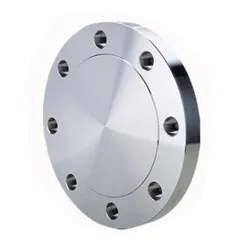-
Cangzhou Yulong Steel Co., Ltd.
-
Phone:
+86 13303177267 -
Email:
admin@ylsteelfittings.com
- English
- Arabic
- Italian
- Spanish
- Portuguese
- German
- kazakh
- Persian
- Greek
- French
- Russian
- Polish
- Thai
- Indonesian
- Vietnamese
- Zulu
- Korean
- Uzbek
- Hindi
- Serbian
- Malay
- Ukrainian
- Gujarati
- Haitian Creole
- hausa
- hawaiian
- Hebrew
- Miao
- Hungarian
- Icelandic
- igbo
- irish
- Japanese
- Javanese
- Kannada
- Khmer
- Rwandese
- Afrikaans
- Albanian
- Amharic
- Armenian
- Azerbaijani
- Basque
- Belarusian
- Bengali
- Bosnian
- Bulgarian
- Catalan
- Cebuano
- China
- China (Taiwan)
- Corsican
- Croatian
- Czech
- Danish
- Esperanto
- Estonian
- Finnish
- Frisian
- Galician
- Georgian
- Kurdish
- Kyrgyz
- Lao
- Latin
- Latvian
- Lithuanian
- Luxembourgish
- Macedonian
- Malgashi
- Malayalam
- Maltese
- Maori
- Marathi
- Mongolian
- Myanmar
- Nepali
- Norwegian
- Norwegian
- Occitan
- Pashto
- Dutch
- Punjabi
- Romanian
- Samoan
- Scottish Gaelic
- Sesotho
- Shona
- Sindhi
- Sinhala
- Slovak
- Slovenian
- Somali
- Sundanese
- Swahili
- Swedish
- Tagalog
- Tajik
- Tamil
- Tatar
- Telugu
- Turkish
- Turkmen
- Urdu
- Uighur
- Welsh
- Bantu
- Yiddish
- Yoruba

Nov . 27, 2024 01:10 Back to list
Techniques and Materials for Effective Welding and Fitting in Industrial Applications
Welding and Fitting The Cornerstones of Modern Manufacturing
Welding and fitting are integral processes in the manufacturing industry, playing a crucial role in constructing and repairing structures and components across various sectors such as automotive, aerospace, construction, and shipbuilding. These techniques ensure the integrity, durability, and functionality of metal parts. Understanding the essentials of welding and fitting is vital for professionals in the field and anyone interested in the mechanics of modern engineering.
Welding The Art and Science of Joining Metals
Welding is the process of joining two or more pieces of metal by applying heat, pressure, or both to form a strong, permanent bond. Various welding techniques are utilized based on the materials being joined, the thickness of the metals, and the specific requirements of the project. Some of the most common methods include
1. Arc Welding This technique utilizes an electric arc to produce heat, melting the metal surfaces to fuse them together. It's widely used in industrial applications due to its efficiency and versatility.
2. MIG Welding (Metal Inert Gas) This process involves feeding a continuous solid wire electrode through a welding gun into the weld pool. MIG welding is favored for its speed and adaptability to different materials.
3. TIG Welding (Tungsten Inert Gas) TIG welding is a more precise method that uses a non-consumable tungsten electrode to produce the weld. It is particularly suitable for thinner materials and applications that require a high level of finish.
4. Spot Welding Common in the automotive industry, spot welding involves joining overlapping metal surfaces through a series of electrical spots, creating localized heat to bond the metals without significant distortion.
Effective welding requires not only proficient technical skills but also a deep understanding of metallurgy. Welders must be aware of the properties of different metals, including their melting points, thermal conductivity, and potential for warping during the process.
Fitting The Art of Precision Assembly
welding and fitting

While welding focuses on the union of metals, fitting pertains to the precise assembly and alignment of these materials into a larger system or structure. In many cases, fitting tasks precede welding operations, ensuring that parts are correctly positioned for optimal joining.
Fitting involves several key activities, including
- Measuring and Marking Accurate measurement is essential in fitting. Tools like calipers and levels are used to ensure that parts align correctly before welding.
- Cutting and Shaping Often, raw materials must be cut, shaped, or altered to fit together properly. This can involve techniques like sawing, grinding, and machining.
- Assembling Fitting may also include temporarily assembling parts using clamps or brackets to hold them in place before the final welding occurs.
- Inspection Quality assurance during the fitting process ensures that components meet the necessary specifications and tolerances, which is crucial for the overall integrity of the assembly.
The Synergy of Welding and Fitting
The synergy between welding and fitting is what allows for the successful production of complex structures. While welding creates the bond, fitting ensures that the components are aligned and structured correctly. Together, they form the backbone of the assembly process in manufacturing, contributing to the creation of everything from industrial machinery to intricate aerospace components.
In conclusion, welding and fitting are essential skills in the modern manufacturing landscape. With advancements in technology and materials, the methods and tools continue to evolve, demanding ongoing education and adaptation for professionals in the field. Mastering these techniques not only enhances individual craftsmanship but also contributes to the safety, reliability, and efficiency of manufactured products.
Latest news
-
ANSI 150P SS304 SO FLANGE
NewsFeb.14,2025
-
ASTM A333GR6 STEEL PIPE
NewsJan.20,2025
-
ANSI B16.5 WELDING NECK FLANGE
NewsJan.15,2026
-
ANSI B16.5 SLIP-ON FLANGE
NewsApr.19,2024
-
SABS 1123 FLANGE
NewsJan.15,2025
-
DIN86044 PLATE FLANGE
NewsApr.19,2024
-
DIN2527 BLIND FLANGE
NewsApr.12,2024
-
JIS B2311 Butt-Welding Fittings LR/SR 45°/90° /180°Seamless/Weld
NewsApr.23,2024











